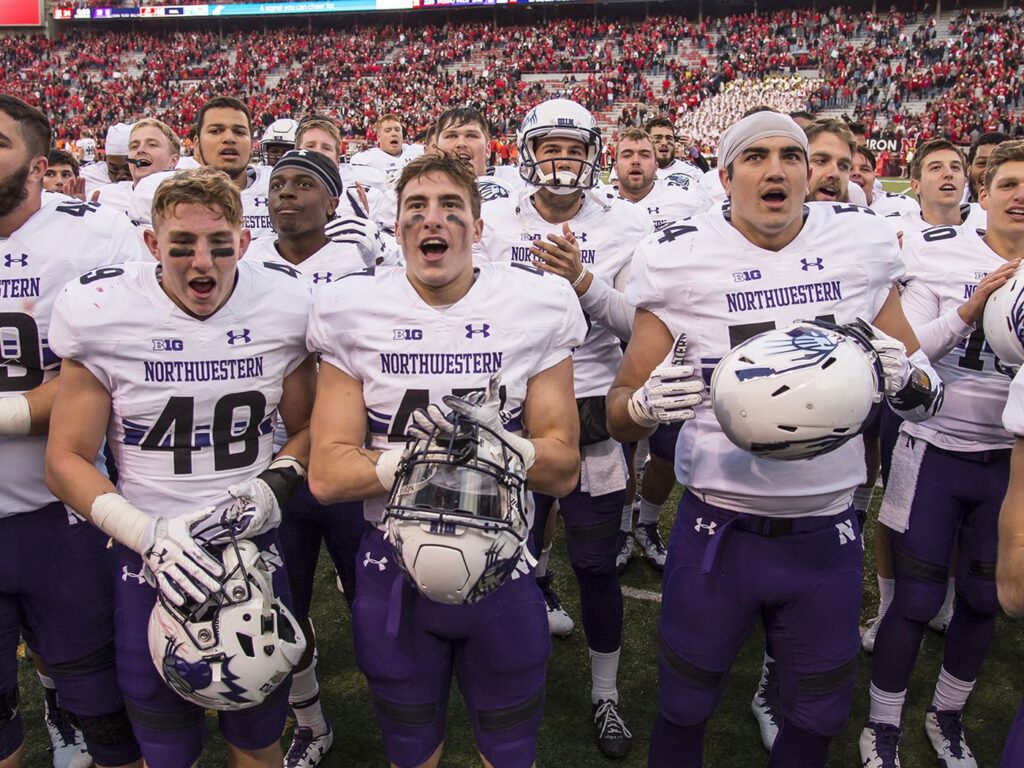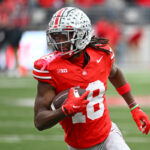Team History
The Northwestern Wildcats football team, associated with Northwestern University and based in Evanston, Illinois, has a long-standing history that reflects both the resilience and determination typical of American college football. The team’s journey through the years is a testament to its enduring spirit, marked by significant achievements, challenges, and an unwavering commitment to excellence. This journey is underscored by its affiliation with the Big Ten Conference, where Northwestern has remained a competitive force, often defying expectations and achieving noteworthy success against larger and more heavily resourced programs.
Northwestern’s history within college football is distinguished not only by its on-field performances but also by the unique position it holds as the only private institution within the Big Ten Conference. This distinction underscores the Wildcats’ unique challenges and achievements, navigating the competitive landscape with a smaller student population and the academic rigor associated with private university status. Despite these challenges, the Wildcats have managed to secure their place in the conference and in the broader college football narrative, contributing to the rich tapestry of the sport’s history in the United States.
Foundation and Early Years
The foundation and early years of the Northwestern Wildcats football program were characterized by modest beginnings and a gradual buildup towards competitiveness within the collegiate football landscape. The appointment of Glenn Thistlethwaite as head coach in the 1920s marked a significant turning point for the program, bringing a new level of seriousness and commitment to football at Northwestern. This period saw the construction of Dyche Stadium, now known as Ryan Field, which provided a permanent home for the Wildcats and symbolized the university’s commitment to its football program. The stadium’s establishment not only facilitated the growth of the team but also fostered a sense of identity and pride among students, alumni, and supporters.
The early achievements of the Wildcats under the guidance of Thistlethwaite and subsequent coaches laid the groundwork for the program’s future success. Key victories, such as the upset against Michigan in 1925, served as milestones that demonstrated Northwestern’s potential on the national stage. These early years were crucial in establishing the Wildcats as a competitive force, setting the stage for future generations of players and coaches to build upon. The team’s evolving identity, marked by resilience and a fighting spirit, became a hallmark of Northwestern football, resonating with fans and cementing the Wildcats’ place in college football history.
Notable Early Achievements
The Wildcats’ notable early achievements set the tone for the program’s future direction and established a foundation of success that future teams would aspire to. Victories in the early decades, including shared titles in the Western Conference, not only elevated the team’s status but also instilled a culture of winning and excellence. These accomplishments during the formative years of the program were critical in building a competitive legacy and fostering a sense of pride and tradition within the Northwestern football community.
The 1925 upset against Michigan stands out as a landmark victory that underscored Northwestern’s potential to compete at the highest levels of college football. This victory, among others during the era, helped to dispel notions of Northwestern’s underdog status and showcased the team’s capacity for excellence and resilience. The successes of these early years were instrumental in shaping the program’s identity, laying a solid foundation for future achievements and establishing the Wildcats as a formidable competitor within the collegiate football landscape.
Periods of Change
The Northwestern Wildcats football program has undergone several periods of change that have shaped its trajectory and identity. The tenure of Ara Parseghian in the 1950s and 1960s exemplifies one of these transformative periods, during which Northwestern saw a revitalization of its football fortunes. Parseghian’s innovative coaching and recruiting strategies brought new life to the program, leading to notable victories that repositioned Northwestern as a competitive force within the Big Ten Conference. These changes were not without their challenges, as the team faced ups and downs, but Parseghian’s leadership marked a significant era of growth and achievement.
Another period of change came with the appointment of Pat Fitzgerald as head coach in 2006, heralding a new era of stability and success for the Wildcats. Under Fitzgerald’s guidance, the team has achieved consistent performances, including bowl game victories and competitive showings in the Big Ten Conference. Fitzgerald’s tenure has been characterized by a focus on both athletic and academic excellence, reflecting the unique balance that Northwestern strives to achieve as a prestigious academic institution with a competitive football program. These periods of change have been pivotal in the ongoing evolution of the Wildcats, contributing to the rich history and tradition of Northwestern football.
Championships and Achievements
Over the years, the Northwestern Wildcats have amassed a series of championships and achievements that highlight the program’s success. The team has secured multiple Big Ten titles, reflecting its competitive edge and ability to achieve at the highest levels of college football. These conference championships are a testament to the hard work, dedication, and resilience of the players and coaching staff alike. Notably, the Wildcats’ recent bowl game victories and their 2018 and 2020 Big Ten West titles underscore the program’s capacity for excellence and its status as a formidable contender within the conference.
These achievements are complemented by the Wildcats’ historical performance in bowl games, which, despite some challenges, have seen the team clinch several victories, marking significant milestones in the program’s history. These bowl game successes not only enhance the team’s reputation but also contribute to the legacy of Northwestern football, celebrating the determination and competitive spirit of its players and coaches throughout the years.
Current Roster
The current roster of the Northwestern Wildcats reflects a dynamic and talented group of athletes committed to upholding the storied tradition of their program. Under the leadership of head coach Pat Fitzgerald, these players embody the spirit of dedication, discipline, and excellence that has become synonymous with Northwestern football. The roster is composed of individuals from diverse backgrounds, each bringing unique skills and perspectives to the team, contributing to a rich and competitive environment that fosters growth and achievement.
This blend of talent and teamwork is pivotal to the Wildcats’ approach to each season, aiming to build upon previous successes and overcome challenges. The current roster is not just a collection of athletes but a cohesive unit bound by a shared goal of excelling in the Big Ten Conference and making significant impacts in college football. Their commitment to excellence on and off the field is a testament to the program’s values and the legacy they aim to perpetuate.
Management and Coaching Staff
The management and coaching staff of the Northwestern Wildcats play a crucial role in the development and success of the football program. Led by head coach Pat Fitzgerald, the staff is comprised of experienced coaches and support personnel dedicated to nurturing the athletic and personal growth of their players. Fitzgerald’s leadership, characterized by a deep understanding of the game and a commitment to the holistic development of his athletes, has been instrumental in guiding the Wildcats to numerous achievements and establishing a culture of excellence.
The coaching staff’s expertise, combined with a strategic approach to recruitment and player development, ensures that the Wildcats remain competitive in the ever-evolving landscape of college football. Their commitment to fostering a supportive and challenging environment enables players to reach their full potential, contributing to the team’s success and the ongoing legacy of Northwestern football.
Home Stadium Information
Ryan Field, the home stadium of the Northwestern Wildcats, stands as a historic and iconic venue in college football. With a seating capacity of 47,129, Ryan Field offers a vibrant and engaging atmosphere for fans and players alike. The stadium’s grass playing surface and traditional design contribute to the classic college football experience, making it a beloved landmark within the Northwestern community.
Established in 1926, Ryan Field has hosted countless memorable moments in Wildcats’ football history, serving as a testament to the program’s enduring legacy. The stadium not only provides a competitive home advantage but also acts as a gathering place for students, alumni, and fans to unite in support of the team. The significance of Ryan Field extends beyond the realm of sports, symbolizing the community and spirit that define Northwestern University and its football program.
-
*********** ***** ******* *** ***** ** ************ **** ********* *****dd.mm.yyyy 00:00 PM
-
****** *********** **** ** ***** ****** *** **** *** ******: ********* *** ******* *** ****'* ****dd.mm.yyyy 00:00 PM
-
*********-***** ********: **** 6 **** *** ***** *** * ********* **** 7dd.mm.yyyy 00:00 PM
-
**********-************ *******: ****** ****ć, ******* *******, *** * ********* ********** ********dd.mm.yyyy 00:00 PM
-
********* **** ********* ** *** ***: ********* *** ********* ** ****** ******** **. *** *** *****dd.mm.yyyy 00:00 PM
-
****************** ******* **********: *** ********' **** ****dd.mm.yyyy 00:00 PM







